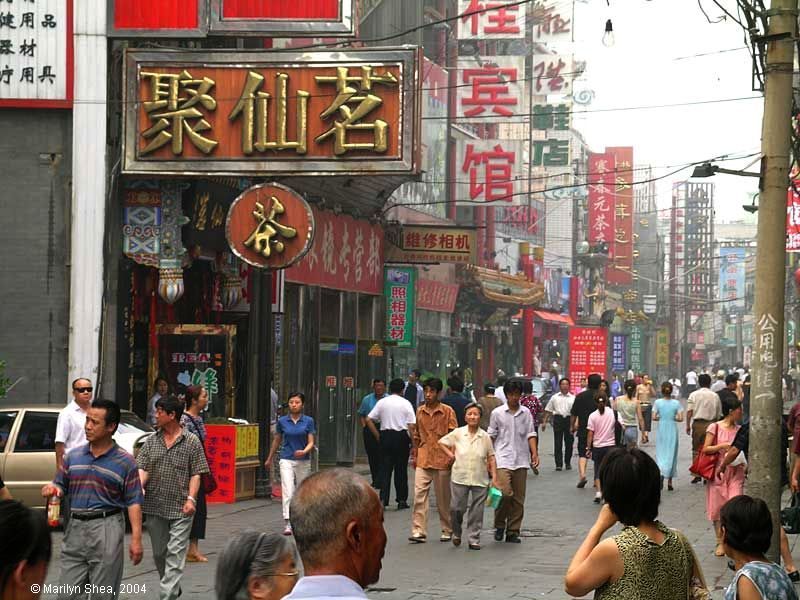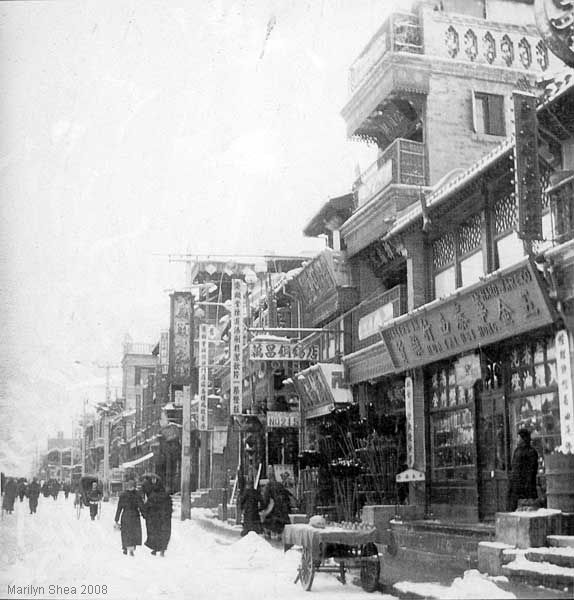 |
| This view down Dashila Jie 大栅栏 (Dàzhàlán) takes in an abundance of tea shops. One of the most famous is Zhangyiyuan 张一元 Tea Shop, founded in 1900. Below is an old view of Qianmen Dajie.
Dashila in modern pinyin is "Dazhalan". Both spellings are used in English. Dashila is the traditional English expression, while Dazhalan is more recent. Both spellings are common on the Internet, but if you are looking through old English language histories and accounts, look for Dashila or Dashilar or Langfangsitiao. Langfangsitiao 廊房四条 Lángfángsìtiáo was the original name. It means "winding corridor four street". There was also 廊房二条、廊房三条 - numbers two and three streets of the same name. During the Ming and Qing dynasties, hutongs had gates with doors that could be closed. At night, to prevent theft and and burglary, the gates were closed and guarded. Residents were supposed to be in their own hutong and people caught where they shouldn't be were suspect. Langfangsitiao 廊房四条 was a particularly wealthy hutong with both merchants and bankers having property there. The emperor had a large fence built to surround the entire hutong and placed extra police to guard at night. This big fence gave the hutong a new common name - Dazhalan means "big fence". During the reign of Emperor Qianlong of the Qing Dynasty, the name was formally changed. Many Beijingers know both names. Dazhalan is only 270 meters long. The name changes as you move along it and cross the road. What we see as a street name is actually a hutong or neighborhood name. The same applies to other hutong in the area, such as Caishikou, meaning "vegetable market", Meishijie,"coal market", Guozixiang,"fruit market", and Zhubaoshi,"jewelry market". They were named by the specialty that developed over time, although most were mixed markets. |
 |
http://hua.umf.maine.edu/China/HistoricBeijing/Qianmen/index.html
Last
update: August 2009
© Marilyn Shea, 2009